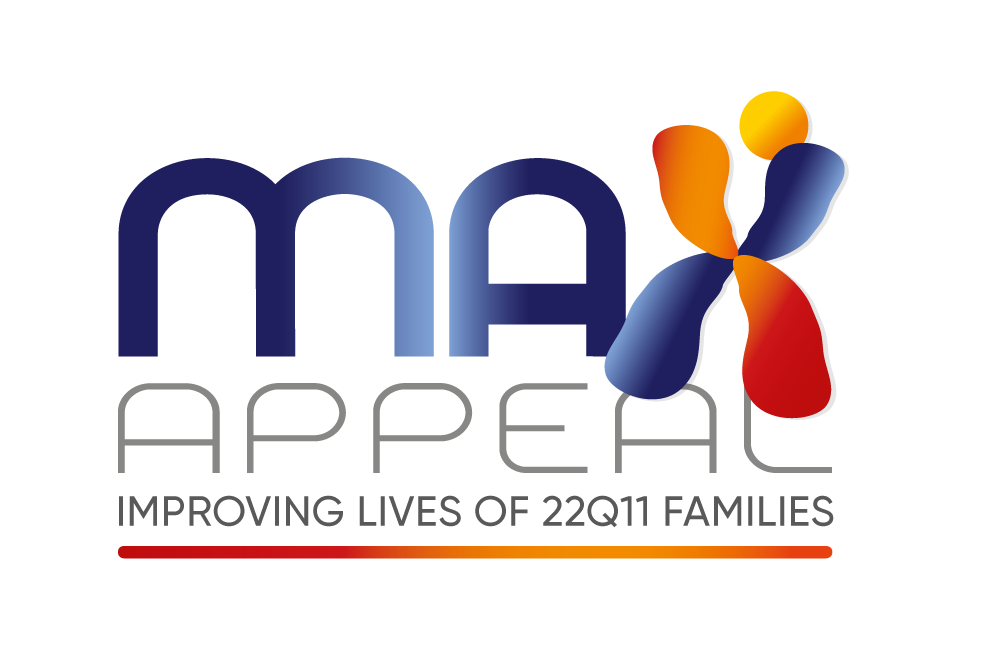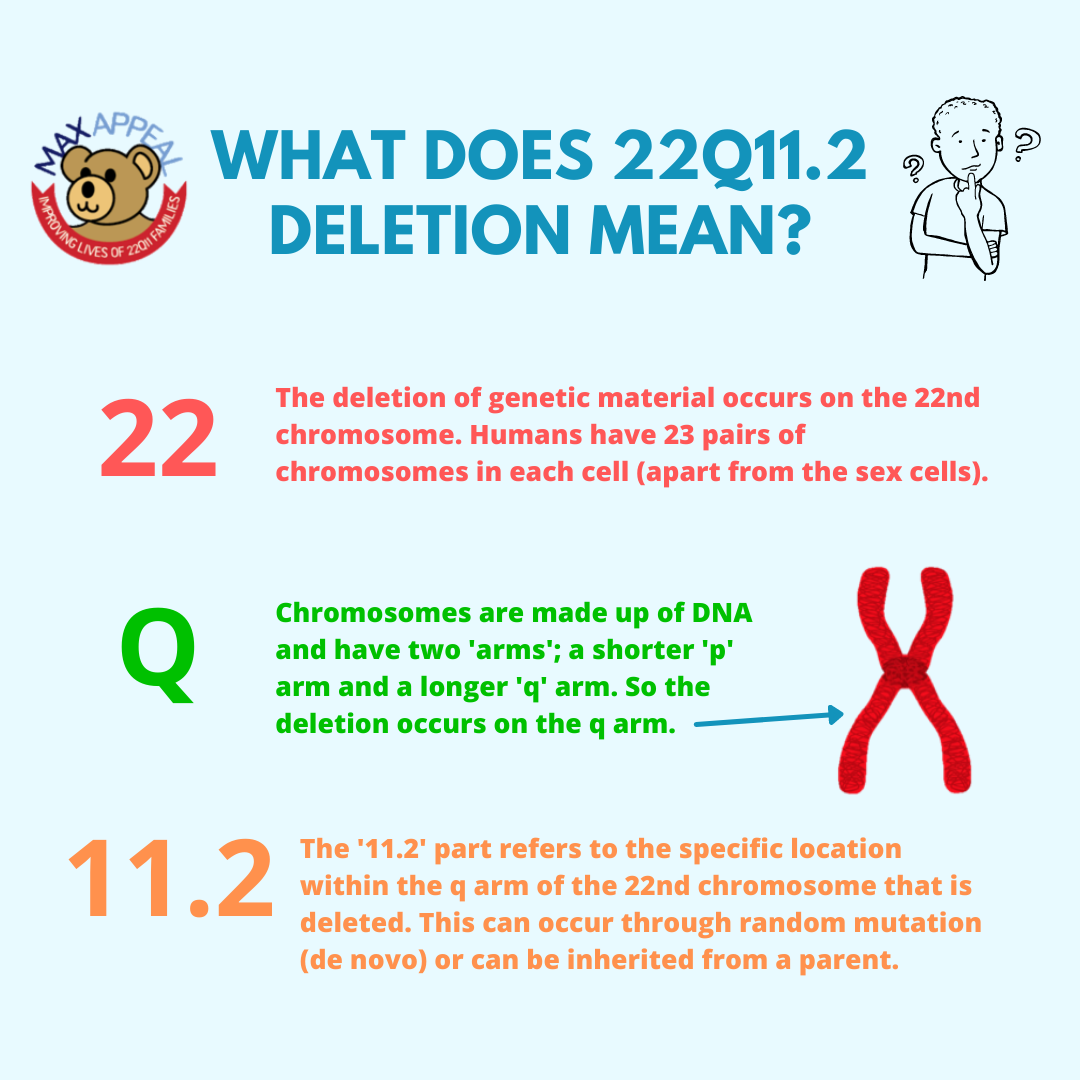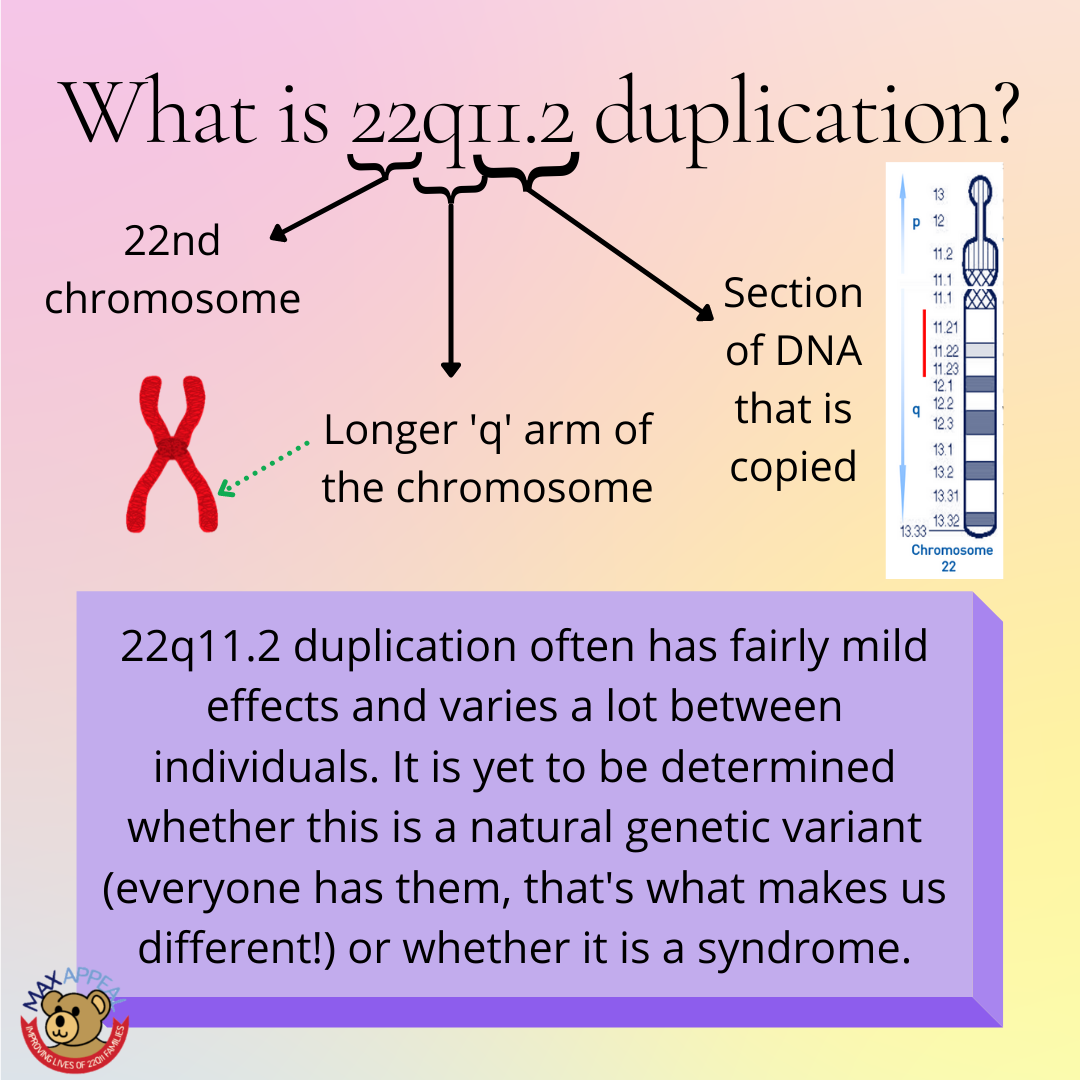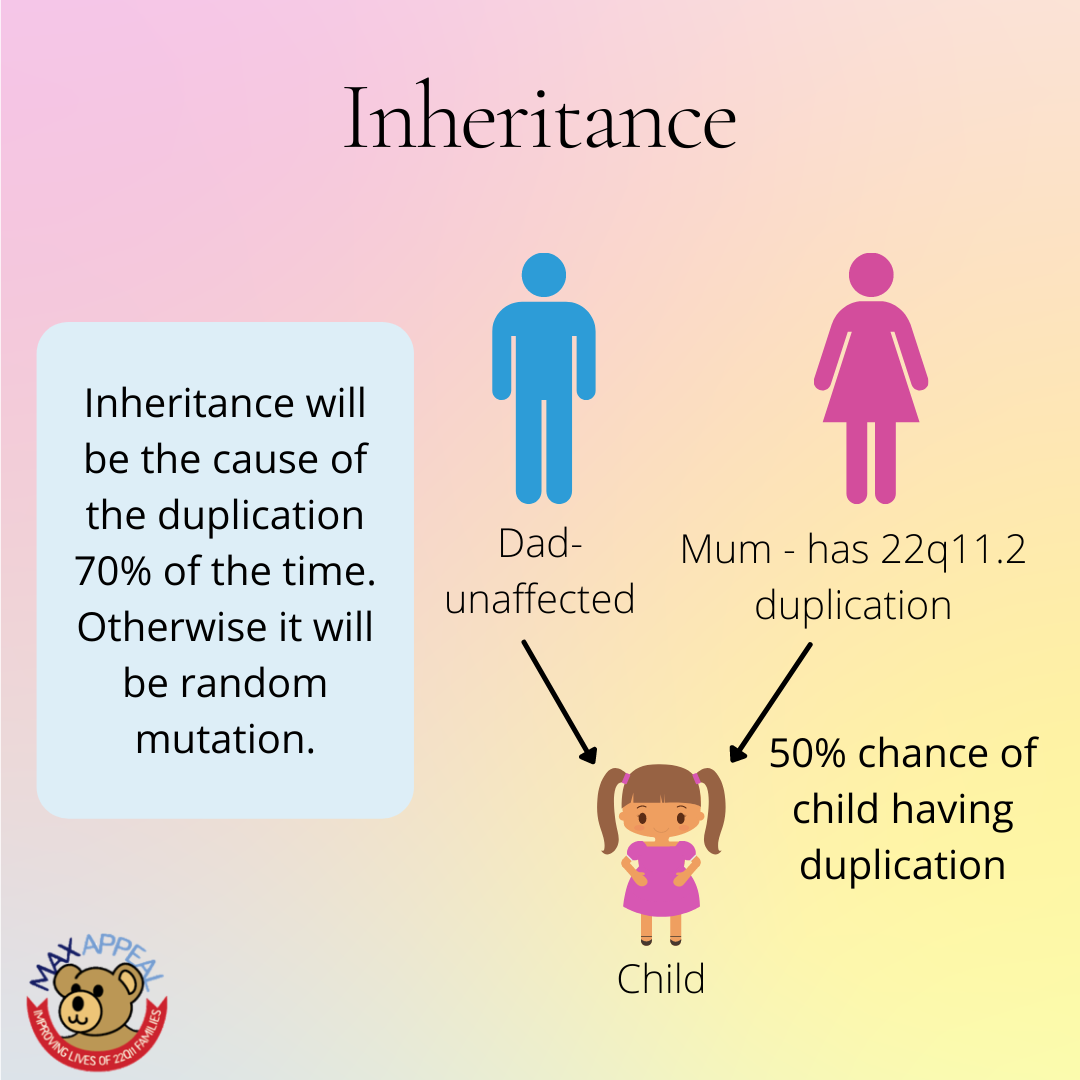What is 22q?
22q11.2 is like a post code that tells medics that 40 or so genes are missing or duplicated from the long arm of the 22nd chromosome, this is also the underlying cause of DiGeorge syndrome and VCFS. The effect 22q11 Deletion Syndrome (and Duplication Syndrome) has is a unique to every individual, from fata heart defects, catastrophic immune deficiency and severe learning disabilities, to mild behavioural problems, speech and language issues and facial characteristics. It is a multi-system disorder and the greatest known generic risk factor to schizophrenia.
Common features of 22q11.2 deletion:
Heart defects: usually of the aorta and pulmonary artery
Feeding: reflux, failure to thrive, difficulty with eating, constipation
Immunity: variable immunodeficiency, see vaccination advice
Facial features: often subtle, small low set ears, bulbous nose
Hypocalceamia: problems metabolising calcium in infancy + late onset
Palate: submucosal cleft palate and/or VPI, hypernasal speech
Hearing: infections, frequent otitis media, some hearing loss
Mental health: bipolar disorders, depression, schizophrenia in adults
Kidneys: bladder infections, missing kidney, reflux
Leg pains: often cramps in night, flat feet
Learning: non verbal difficulty, poor executive function & concentration
Behaviour: immature, hyperactive, mood swings, low self esteem
Development: delays, poor motor skills, speech and or language delay
Affects up to 1:2,000 births: the most common chromosome deletion
non of these occur in 100% of cases - the effects are variable






